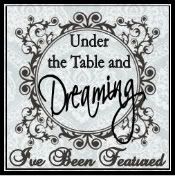This design also became the background for my portfolio.
First up is the title page:
The first project is a residential project set in Montauk, NY. The client is a middle-aged woman who is a writer and works from home. She wants this to be her forever home, so we had to take 'aging in place' into account and that she may need a wheelchair someday. She has joint custody of her teenage son, who has asthma. The client is interested in sustainable design, also known as green design, which meant thoughtful consideration of building materials and furnishings. And because the professors love throwing a curveball, the home had to be made from (9) 18'x18' squares. It probably seems like creating a floor plan is a piece of cake, but there are many things that need to be taken into consideration, such as the traveling path of the sun, making sure the most used spaces get the best view, creating a good flow, etc.
Given that this home is close to a cliff with ocean views, my inspiration for the floor plan was a piece of driftwood. The bedrooms and home office branch (pun kind of intended) off from the main living areas, and the guest space is separate, like a piece that broke off the driftwood.
Next is a perspective of the living room. Sustainable materials were used, like bamboo flooring, reclaimed wood for the fireplace wall, glass tiles for the fireplace surround, a gas fireplace, driftwood side table, etc. The drapes are dummy panels to reduce the amount of dust for her son's asthma and the planter behind the sofa helps with the indoor air quality. If I could go back and change a few things, I would put some bookcases next to the fireplace. It took me 14 hours to draw this (you have to start out by figuring out a grid so things are in perspective) and render it, so I don't know if I will ever go back and change it, haha.
The next page is the floor plan again, but points out various areas where sustainable materials are used, such as a green roof over the bedrooms, a rain harvesting pond and a liquid desiccant waterfall to help draw the moisture out of the air in the summer months. It also shows some of the considerations for the aging in place, such as a 5' turning radius in the master bathroom and an open floor plan.
The next project is a boutique hotel located in Hoboken, NJ. We each had to pick a name out of a hat of an artist and design the hotel around that artist. I got Wolf Kahn, who painted bright colored landscapes. It was a challenge to mix his artwork into an urban hotel, but I had so much fun! I used bright colors, while using urban materials, like bricks, windows with black mullions, and old schoolhouse pendants. I named the hotel Urban Roots. Here is the front elevation.
This next picture shows the first and second floor plan. One thing about interior design that people might not think about is that there is a lot of research. The codes are pretty strict and dictate how many exits, elevators, bathrooms and egress stairs a building must have according to occupancy. The most challenging part of this floor plan for me was figuring out the restaurant seating. We had to be able to seat a certain amount of people while keeping a 6' path for main walkways. And of course there is also a minimum amount of space that needs to be between the tables, accounting for the chairs being pulled out. When a lot of us were finalizing our floor plans, the professor sprung on us that we also needed to incorporate 6 columns on the first floor. Fortunately, it was pretty easy to fit mine in and I was able to work them into the design of my restaurant.
Next is the perspective of the lobby after you walk through the front doors. I used a stained concrete for the flooring which incorporate the bright colors that Kahn used in his painting. The material on the front desk is concrete covered in colored moss. The word 'Urban' is zinc letters for an urban vibe, while the word 'Roots' is moss that is growing in the shape of the letters. The trees soften the space and also bring the outdoors in and represent the subject of Kahn's paintings. As for the furniture, I used a glider as a nod to the outdoors, but this aint' your grandma's glider =) The bright green bamboo chairs incorporate color and natural material and I love how the arms of the chair and glider have the same curve. We had to incorporate individual seating areas for business travelers who need to work on their laptops, so I used a chair with a chair that has a branch motif.
Next up is a perspective of the restaurant. I continued with the bright colors and urban materials. I used the windows to create privacy for the booths and used the schoolhouse pendants. On the wall, you can see some of Kahn's paintings. I could have just hung them them on a regular painted wall, but I didn't want it to look like an art gallery, so instead, I used a moss wall so the paintings blend in.
For the bar, I used a lot of the same materials, but used a darker wall paint that is more muted that the bright colors in the restaurant.
The next project is a children's museum located in Jersey City, NJ. I knew right away that I wanted the theme of the museum to be a big backyard since it's an urban area where kids don't have big backyards. Even though it's new construction, I used brick and columns to blend in with the surrounding ares, but used bright colors for a fun vibe. This project was by far the hardest to figure out the floor plan. There were a lot of requirements and a lot that needed to fit into a small space. The fire stairs had to be placed a certain distance apart due to codes, and we had to add spaces like a mechanical room and storage. Since the layout on every floor was so different, it was challenging to place the windows in a linear fashion (since it would look weird to have randomly placed windows from the outside) and make sure they weren't too close to walls. I solved the awkward blank spaces by placing dimensional tree cutouts on the front facade.
Now we're onto the first floor plan, which is going to be a little hard to explain since there is a lot going on, but I'll give it my best =) You enter in the middle of the building (top of picture) and the doors are on the left hand side of the covered outside area. You enter into the security area where you have to walk through a security scanners. I didn't want them to look intimidating, so I incorporated them into the theme, which I will explain with the next picture. The biggest feature of the museum is on the right hand side before you get to the restrooms. It's a large tree trunk that spans three floors. Those blue platforms go from the first floor to the second and there is are stairs nearby for parents to keep up with their children.
The following picture is a section of the building and might be even harder to explain =) If you look on the first floor to the left of the brick wall, that is the security area. Remember those scanners I was talking about? I made them look like houses that you walk through, like you are walking out a back door and entering the backyard. There is a big tree in the middle with 'tire swings' on each side, which are actually the face of a scanner for purses and bags. To the left of the security area is a retail space, complete with tree trunk merchandise displays. To the right is the information desk (which I'm sure you could figure that out since it says 'INFORMATION' above, ha). If you keep heading right, you'll see the big tree trunk with the platforms inside, and beyond that is the elevator and fire stairs.
Continuing upstairs and starting on the right hand side, there are three treehouses connected by rope bridges. There is also a slide, fireman pole, and a bucket on a pulley. The platforms in the treehouse continue up to that looooooong branch, which is actually a tunnel kids can climb through. The tunnel ends at a platform in the trampoline room. A giant hammock sits under the platform, which is next to a rock climbing wall. The exhibit in the middle of this floor is for the youngins', which you will see a picture of in a minute.
On the third floor, starting on the left, is a theater. Outside of the theater is a giant sandbox and some water tables with channels for the kids to pour water from one table to the next. The tree trunk on this floor acts as a play house.
The cafe is on the fourth floor which has a wall of sliding doors that can be completely opened up to the outside space when the weather is nice. The outdoor space has a garden where kids can plant their own plants and learn about the fruits and veggies that are grown on the rooftop and are used in the cafe. There is a giant space for kids to ride tricycles.
I hope you guys are still with me after all of that! Here is the picture of it so it will hopefully makes sense =)
This next picture is a perspective of the lobby, after you walk through security. The flooring is slate for a natural feel. The front of the lobby desk is a chalkboard for kids to scribble while their parents pay. There are lower counters to accommodate for people in wheelchairs. I chose the rope lighting because it made me think of a rope swing or rope you would use to play tug-of-war. The big clouds hanging down from the ceiling are pendant lights. Behind the logo is cork, which helps absorb some of the noise.
Here is a perspective of the kid's exhibit that I mentioned earlier. It's geared towards 2-5 year olds and my inspiration was bugs. Everything is giant so the kids have a perspective of little bugs. There is a grass maze and a giant mushroom swing. Chalkboard lines the wall for scribbling and the floors are cork to absorb any little tumbles the kids may take.
Next is a RCP, or reflected ceiling plan. It isn't so pretty to look at, but lighting is a HUGE part of design.
Now we're onto the peel away model of a house. There is SO much to building a house!
Here's some more stuff that isn't 'pretty', but is so necessary to good design. Making sure that spaces are up to code accommodating ADA. The turn radius of a handicap restroom has to be a minimum of 5', but I've heard that that is even tight. The toilet has to be a certain height and the grab bars must be a certain length, distance from wall and height off the floor. That's just the tip of the iceberg though.
The fire stairs are another important part of design. They must be surrounded by 1' concrete walls and must contain an area of refuge for people in wheelchairs to wait for help.
If you've hung out at my blog for a while, you'll probably recognize these projects. The first one is one of my side tables I made from a luggage rack and my dad building the top. The second is my free craigslist armoire that I gave a facelift. And lastly is my sunburst mirror I made from wood shims and a ceiling medallion.
And last, but not least, are two of the murals I've painted.
If you are still reading this, I must say congratulations! I know that was a lot to read. Believe it or not, that's maybe half of the work I did. I hope you enjoyed browsing through my virtual portfolio =)

Linking up here































1 comment:
Ali, I'm visiting from the Sunday Showcase, and I just want you to know I think your work is amazing. I don't know where you went to school, I am guessing Eastern US, but I see you're in CA now. Anyway, you should definitely make finishing your degree a goal, and having been a real mom, raising a son will only add to your experience and insight when you do. Congrats on this portfolio - it's obvious it was a LOT of work and it shows!
Rita C at Panoply
Post a Comment